SAN ANTONIO — We're tracking the latest numbers from the coronavirus pandemic in San Antonio and across Texas. Here are the latest numbers reported by Bexar and surrounding counties:
- Bexar County: 479 new cases and seven fatalities from COVID-19 were reported Wednesday. There have been a total of 21,546 cases and 208 virus-related fatalities in the county.
- Comal County: 73 new cases and one fatality from COVID-19 were reported Wednesday. There have been a total of 1,422 cases and 30 virus-related fatalities in the county.
- Hays County: 70 new cases and one fatality from COVID-19 were reported Wednesday. There have been a total of 3,769 cases and 14 virus-related fatalities in the county.
How Bexar County is trending:
We're tracking how many coronavirus cases are confirmed in Bexar County each day from the time San Antonio Metro Health began reporting cases more than two months ago. Graphing those daily case numbers along a 14-day moving average provides an accurate picture of the curve in the San Antonio area and the direction we're heading amid the coronavirus.
On Wednesday, Mayor Ron Nirenberg reported an additional 479 coronavirus cases in Bexar County, bringing the total to 21,546. Seven more virus-related deaths were also reported, raising the death toll to 208.

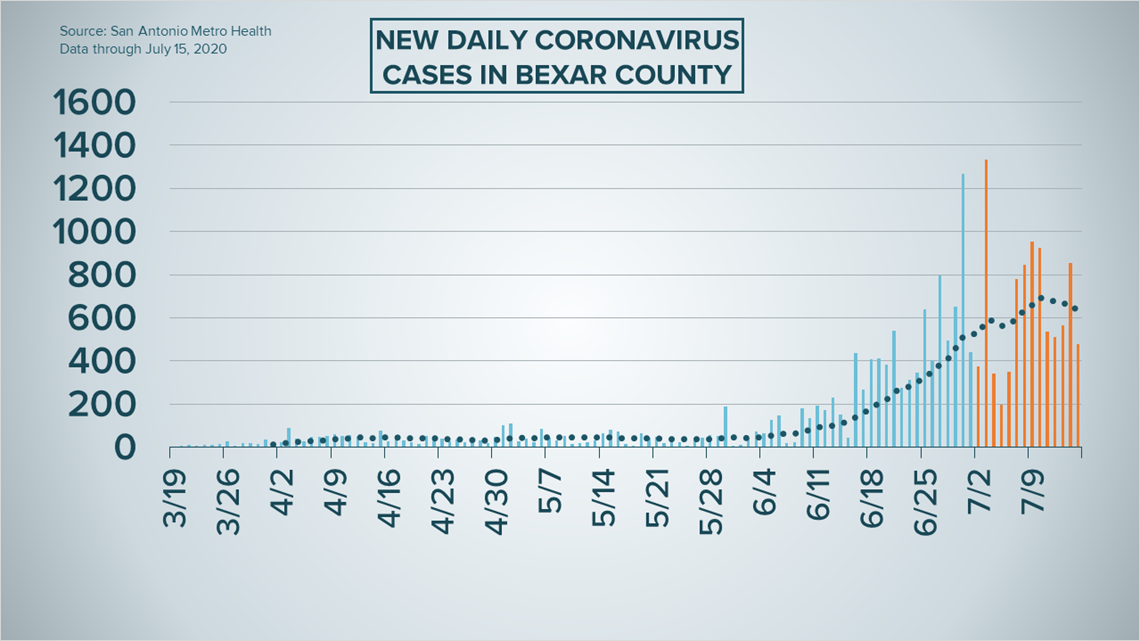
Meanwhile, the number of patients in Bexar County hospitals dipped slightly Wednesday to 1,231 current hospitalizations. 438 patients are in ICU, while 274 patients are on ventilators. 11 percent of the county's hospital beds remain available, while 43 percent of the area's ventilators are available.

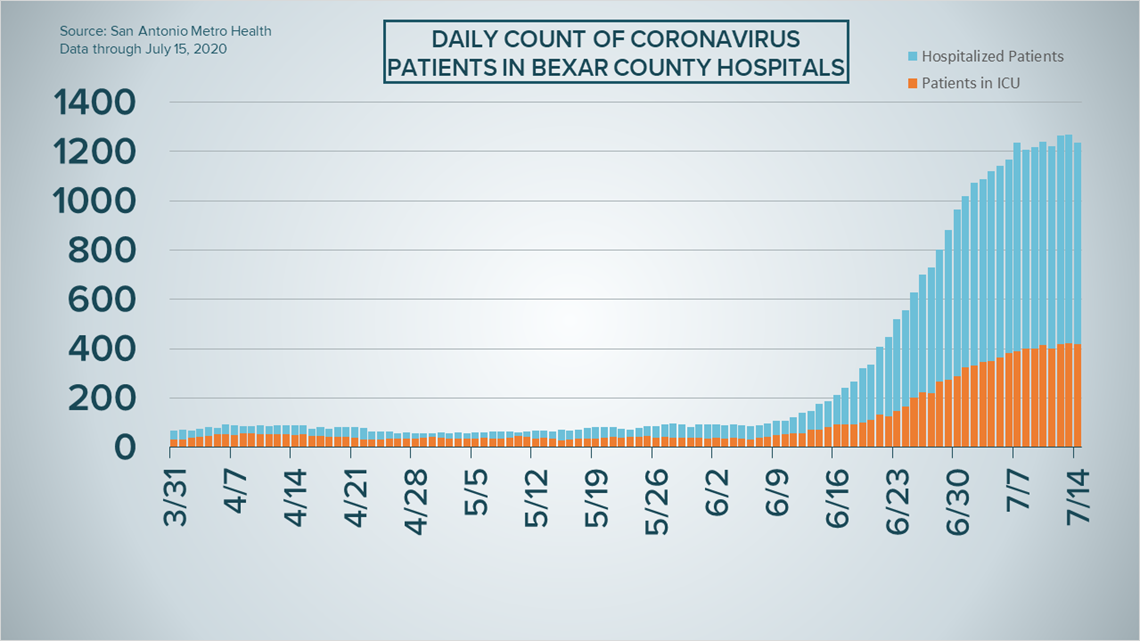
Bexar County, By The Numbers:


Coronavirus in Texas
Health officials reported 10,791 newly confirmed coronavirus cases Wednesday, marking the second day in a row the state has hit a record high of daily cases. An additional 110 virus-related deaths were reported in the state, marking the highest fatality total reported within a 24-hour span. Those figures bring the statewide totals to 282,365 COVID-19 cases and 3,432 deaths.

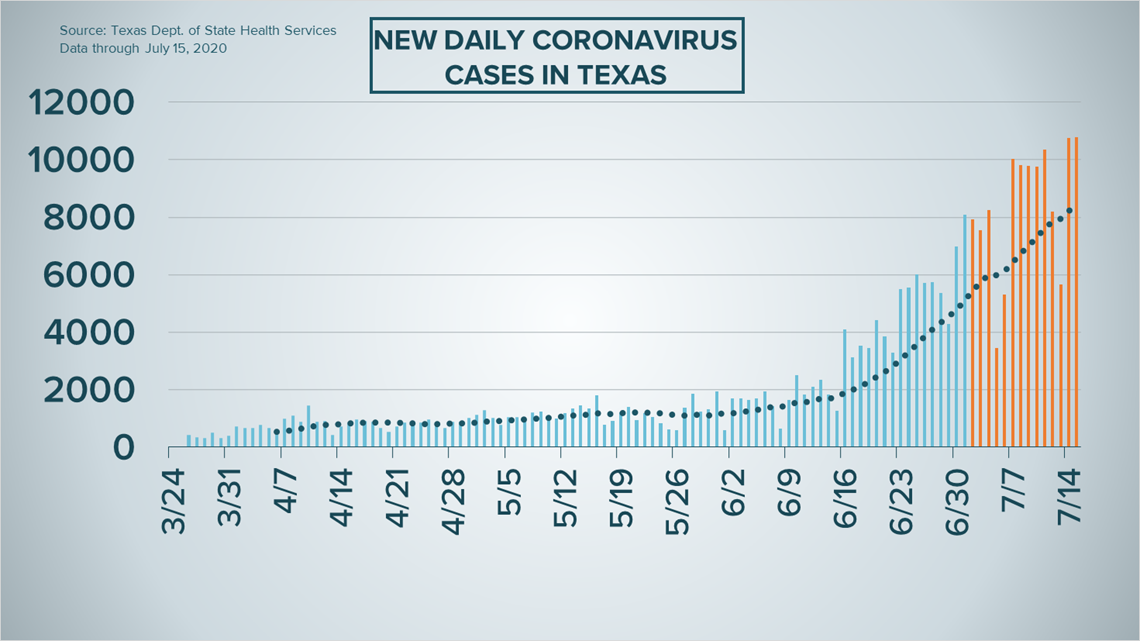

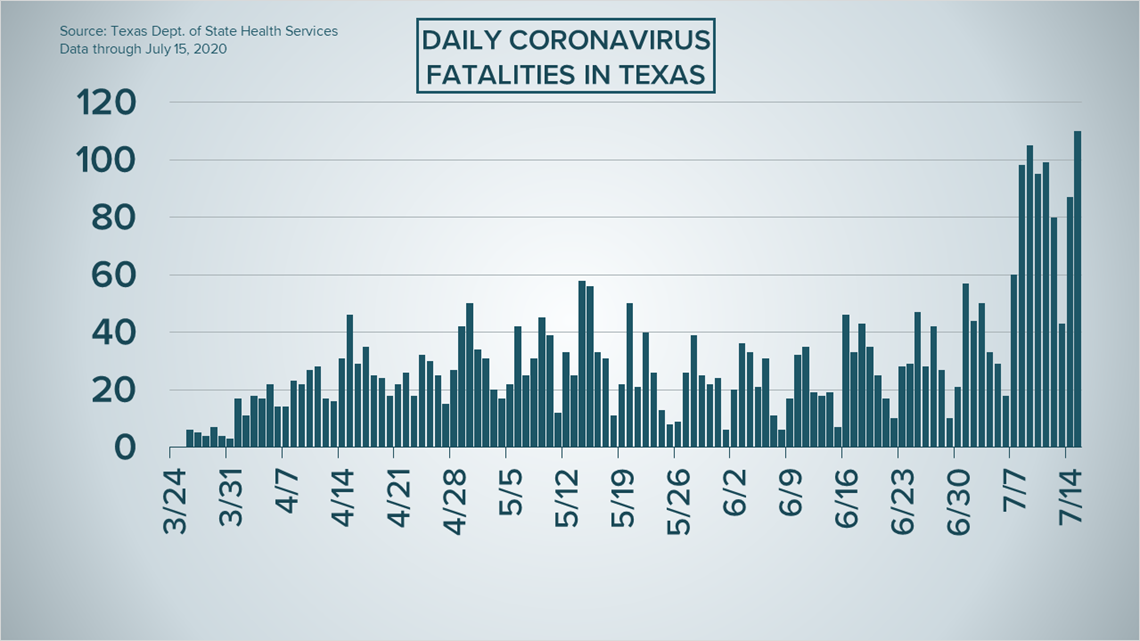
Wednesday, health officials removed 3,484 coronavirus cases from the state's total coronavirus count due to how Bexar County reports the area's total coronavirus cases. Metro Health includes both positive test results as confirmed by molecular and antigen testing. Up until Wednesday, Texas Department of State Health Services had included the total number of cases for Bexar County but has amended their count to exclude the county's antigen testing numbers.

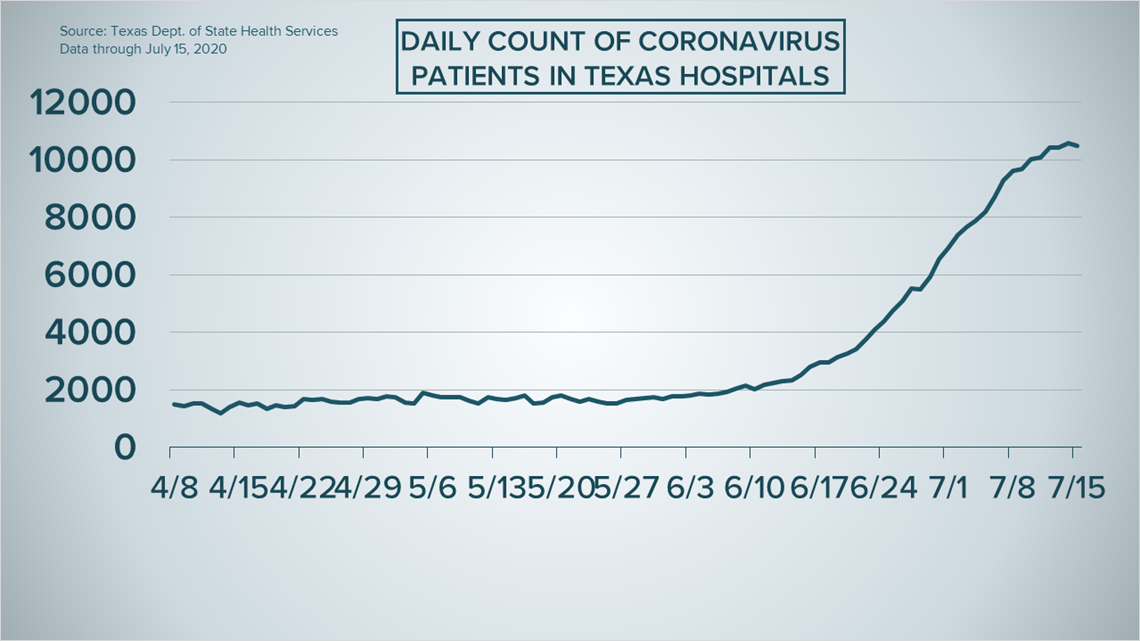
More than 129,000 Texans remain ill with the virus, while an estimated 149,000 have recovered.
Latest Coronavirus Headlines
- Will I get a second stimulus check? Answers to your stimulus check questions
- Mother of 6-year-old who tested positive for coronavirus says parents need to be more cautious
- JBSA cancels November airshow due to coronavirus
- Phase three of promising coronavirus vaccine study to take place in San Antonio
- 2 stylists had COVID-19, but wore masks. 139 of their clients didn't become ill
- Texas classrooms can stay closed this fall without losing state funding if local health officials order it
Coronavirus symptoms
The symptoms of coronavirus can be similar to the flu or a bad cold. Symptoms include fever or chills, cough, shortness of breath or difficulty breathing, fatigue, muscle or body aches, headache, new loss of taste or smell sore throat, congestion or runny nose, nausea or vomiting and diarrhea, according to the Centers for Disease Control.
Most healthy people will have mild symptoms. A study of more than 72,000 patients by the Centers for Disease Control in China showed 80 percent of the cases there were mild.
But infections can cause pneumonia, severe acute respiratory syndrome, kidney failure, and even death, according to the World Health Organization. Older people with underlying health conditions are most at risk.
On June 25, the CDC expanded the list of groups at a higher risk of severe illness due to coronavirus.
Experts determined there was consistent evidence these conditions increase a person's risk, regardless of age:
- Chronic kidney disease
- COPD (chronic obstructive pulmonary disease)
- Obesity (BMI of 30 or higher)
- Immunocompromised state (weakened immune system) from solid organ transplant
- Serious heart conditions, such as heart failure, coronary artery disease, or cardiomyopathies
- Sickle cell disease
- Type 2 diabetes
The CDC believes symptoms may appear anywhere from two to 14 days after being exposed.
Human coronaviruses are usually spread...
- Between people who are in close contact with one another (within about 6 feet).
- Through respiratory droplets produced when an infected person coughs, sneezes or talks. These droplets can land in the mouths or noses of people who are nearby or possibly be inhaled into the lungs.
- Some recent studies have suggested that COVID-19 may be spread by people who are not showing symptoms.
Help stop the spread of coronavirus
- Stay home when you are sick.
- Eat and sleep separately from your family members
- Use different utensils and dishes
- Cover your cough or sneeze with your arm, not your hand.
- If you use a tissue, throw it in the trash.
Lower your risk
- Wash your hands often with soap and water for at least 20 seconds. If soap and water are not available, use an alcohol-based hand sanitizer.
- Avoid touching your eyes, nose, and mouth with unwashed hands.
- Avoid close contact with people who are sick.
- Clean and disinfect frequently touched objects and surfaces.
- The CDC recommends wearing a mask or cloth face covering if you have to be out due to an essential service or essential activity such as going to the grocery store.
- If you are 60 or over and have an underlying health condition such as cardiovascular disease, diabetes or respiratory illnesses like asthma or COPD, the World Health Organization advises you to try to avoid crowds or places where you might interact with people who are sick.

